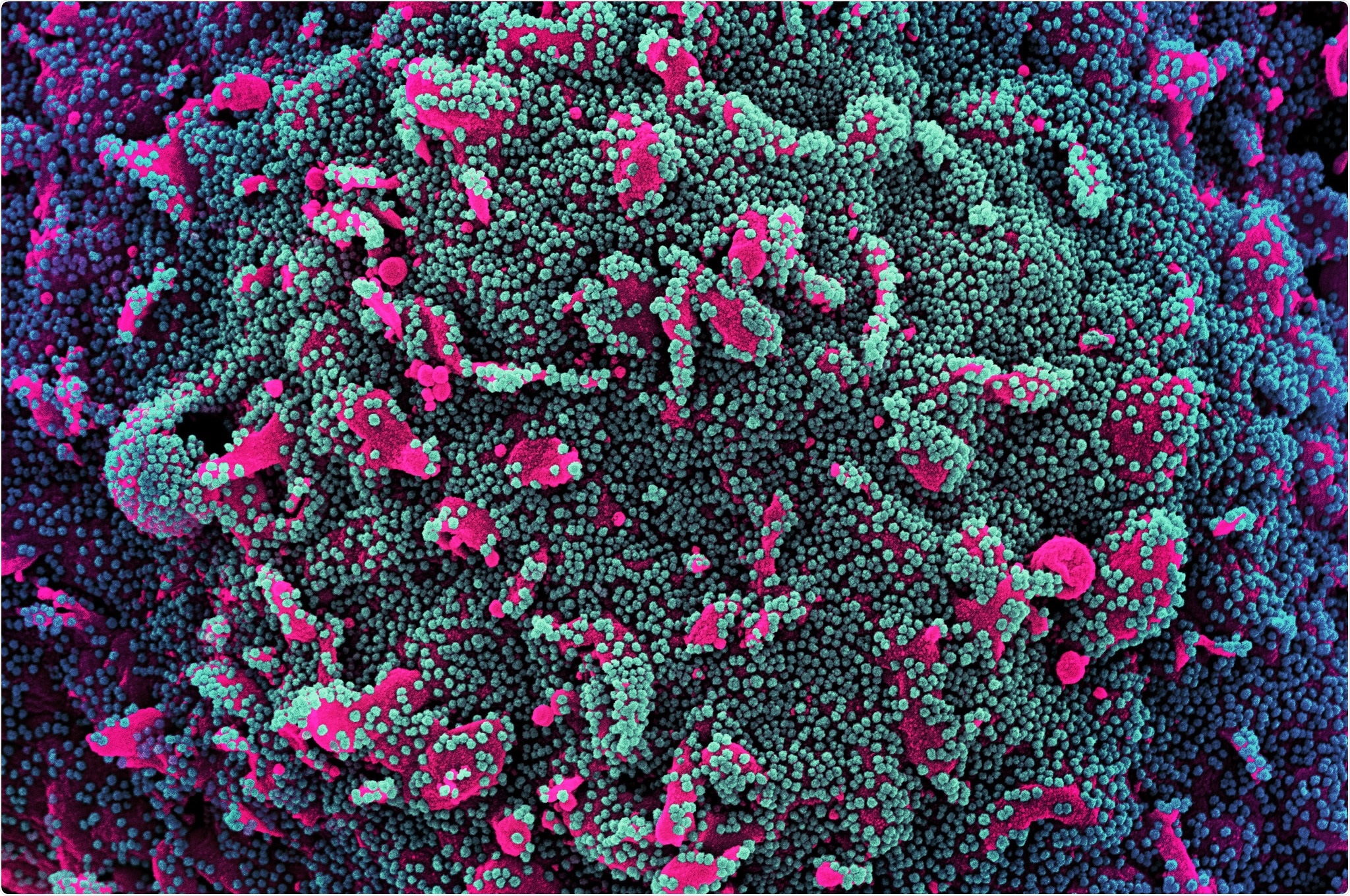Researchers have developed a trimeric immunogen derived from the SARS-CoV-2 receptor-binding domain and found that it is stable up to 100 °C with high levels of antibodies in mice and guinea pigs.
There have been significant efforts worldwide to combat COVID-19, the disease caused by the severe acute respiratory syndrome coronavirus 2 (SARS-CoV-2). One prominent strategy has been to develop vaccines against the virus. Numerous vaccine candidates are under development, and a handful have now been approved for use by several countries.
However, most vaccines need to be frozen or stored in the refrigerator, which requires cold-chain storage and transport facilities, increasing logistical challenges. Thus, there is a need for a vaccine that can be stored at higher temperatures and yet retain its efficacy.
The receptor-binding domain (RBD) on the spike protein of the SARS-CoV-2 virus is responsible for binding and subsequent fusion to the host cells. Most neutralization antibodies target the RBD. There are several methods of increasing the amounts of neutralizing antibodies, but they can cause adverse side effects in some people or may not be as effective with repeated immunization.
High antibody levels seen in animals
To get around this, a team of researchers reports linking the N-terminus of a heat-tolerant RBD that they previously designed to a disulfide linked trimerization domain derived from human cartilage matrix protein (hCMP), which when added with adjuvants elicited strong antibodies in guinea pigs and mice and does not need cold storage. The team reported their results in the bioRxiv* preprint server.
Their previously designed RBD comprising residues 332-532 with an additional glycosylation site at N532 (mRBD) induced neutralizing antibodies in guinea pigs. Because binding a few more of the same molecules together, or oligomerization, is believed to increase antibody titers, the authors combined their RBD with the trimerization motif. The trimer is stabilized by intermolecular disulfide bonds, and it was hypothesized that it will not dissociate.
The trimeric hCMP-mRBD protein maintained its stability for up to four weeks at 37 °C and can tolerate higher temperatures, up to 100 °C for shorter periods. This property will make it suitable for deploying vaccines in areas without cold-storage facilities.
The hCMP trimerization sequence is similar to 81% and 91% of the corresponding orthologs for mice and guinea pigs, respectively, resulting in lower hCMP titers in guinea pigs. The correspondence is 100% for human proteins, so the hCMP titers will be relatively low in humans.
The team investigated the immune response of hCMP-mRBD in guinea pigs and mice with different adjuvants. The animals were vaccinated with three doses, the last doses administered 21 and 42 days after the first dose.
Two weeks after the first dose, with the AddaVaxTM adjuvant, mice showed 16-fold higher spike-protein binding antibody levels compared to guinea pigs and 14-fold higher spike-protein antibody levels in guinea pigs compared to the monomeric RBD. Thus, mice seemed to show a better immune response compared to guinea pigs, likely because of differences in the animals’ immune response. In an angiotensin-converting enzyme 2 (ACE2) competition assay, mice showed about 3.5-fold more titers compared to guinea pigs.
When the adjuvant used was Alhydrogel with CpG, both mice and guinea pigs showed a similar response to mRBD, while a significantly higher response, about 28-fold, to spike-2P proteins in mice. Mice also showed higher antibody levels to hCMP-mRBD compared to guinea pigs. In the ACE2 receptor competition assay, mice showed 11-fold higher competition compared to guinea pigs.
High-temperature tolerant vaccine candidate
Antibodies to pseudovirus were also higher in mice than in guinea pigs, and levels in both the animals were higher than those in sera from COVID-19 convalescent patients. In mice, the neutralization antibodies produced are more than 110-fold higher than in the convalescent sera.
The team also studied the expression of hCMP-mRBD from permanent cell lines using Chinese hamster ovary (CHO) and HEK293 cells for further clinical development. They obtained protein yields of 80–100 mg/L with disulfide-linked trimers. Mice immunized with these proteins showed high levels of antibodies to spike protein and ACE2 competing antibodies.
Thus, according to the authors, this single-component, trimeric RBD may be easier to manufacture compared to other multi-component nanoparticle systems. It should also induce higher levels of antibodies to RBD because of the trimerization sequence derived from the host. The availability of permanent cell lines for expressing the immunogen will allow further clinical development of this high-temperature stable protein as a vaccine candidate.
*Important Notice
bioRxiv publishes preliminary scientific reports that are not peer-reviewed and, therefore, should not be regarded as conclusive, guide clinical practice/health-related behavior, or treated as established information.
https://news.google.com/__i/rss/rd/articles/CBMiiQFodHRwczovL3d3dy5uZXdzLW1lZGljYWwubmV0L25ld3MvMjAyMTAxMTcvQS1oaWdoLXRlbXBlcmF0dXJlLXRvbGVyYW50LVNBUlMtQ29WLTItZGVyaXZlZC1pbW11bm9nZW4tYXMtYS1wb3RlbnRpYWwtdmFjY2luZS1jYW5kaWRhdGUuYXNweNIBjQFodHRwczovL3d3dy5uZXdzLW1lZGljYWwubmV0L2FtcC9uZXdzLzIwMjEwMTE3L0EtaGlnaC10ZW1wZXJhdHVyZS10b2xlcmFudC1TQVJTLUNvVi0yLWRlcml2ZWQtaW1tdW5vZ2VuLWFzLWEtcG90ZW50aWFsLXZhY2NpbmUtY2FuZGlkYXRlLmFzcHg?oc=5
2021-01-18 02:49:00Z
CAIiEC_roXFZYuuA9UC9h5nrlW0qMwgEKioIACIQZdRflS9INK7zM5FkBi3R3CoUCAoiEGXUX5UvSDSu8zORZAYt0dwwr47MBg
Bagikan Berita Ini















0 Response to "A high-temperature tolerant SARS-CoV-2 derived immunogen as a potential vaccine candidate - News-Medical.Net"
Post a Comment